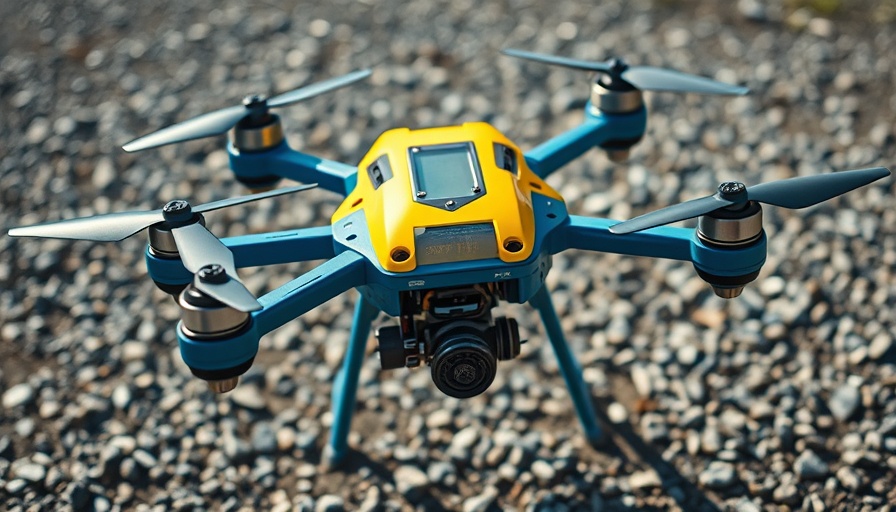
Revolutionizing Coating Applications with Drones
Apellix, the Jacksonville-based leader in drone technology, is making significant strides in the field of industrial coatings with its newly launched Spray-Painting Drone Beta Program. This initiative is set to transform how painting contractors operate, especially in challenging environments where traditional methods may falter. With a semi-autonomous platform, this drone aids in precise application of high-performance coatings and is poised to change the industry's landscape.
Why This Program Matters
The Spray-Painting Drone is not just another tool; it represents a significant technological advancement. Featuring proprietary distance-hold and speed control technologies, it allows for efficient painting in hard-to-reach or dangerous areas. This development is particularly relevant for contractors who are constantly seeking ways to improve safety and efficiency in their operations. The drone can effectively cover over 1,000 square feet per hour, making it a powerful alternative to traditional methods that often require lifts or scaffolding.
Exclusive Access for Industry Leaders
The beta program's limited enrollment is intentional, targeting AMPP QP1-certified contractors and comparable organizations. By involving a small group of beta partners, Apellix aims to facilitate focused support and direct collaboration. This approach not only enhances the feedback loop but also ensures that the final drone design best meets the industry's needs. This collaboration is crucial as the feedback from these experts will help optimize crew safety during operations.
Compliance Standards and Versatility
Apellix's drone technology is making waves not only for its innovative features but also for its compliance with various surface preparation standards, including SSPC-SP-1 and ISO 8501-1. This adherence to regulatory standards signifies the drone’s reliability in executing complex coating tasks, further reinforcing its value proposition to contractors. As industries evolve and embrace more advanced technologies, solutions like Apellix's drones could become mandatory.
Industry Context and Future Predictions
As the demand for safe and efficient construction practices grows, drones like those developed by Apellix represent a vital element of adapting to new business realities. According to industry analysts, integrating drone technology into construction and maintenance not only enhances productivity but diminishes labor-related risks. The future for drone applications in these fields is bright, with advancements in automation and AI likely to drive further innovations. Businesses that can pivot and adapt to these emerging technologies may find themselves at a competitive advantage.
Conclusion: Embrace the Change
The launch of the Spray-Painting Drone Beta Program is an exciting development for painting contractors and the overall construction industry. With its capability to simplify complex coating applications and enhance safety, this technology is worth watching closely. Industry professionals should consider getting involved in the beta program to be at the forefront of this technological revolution.
 Add Row
Add Row  Add
Add 




Write A Comment